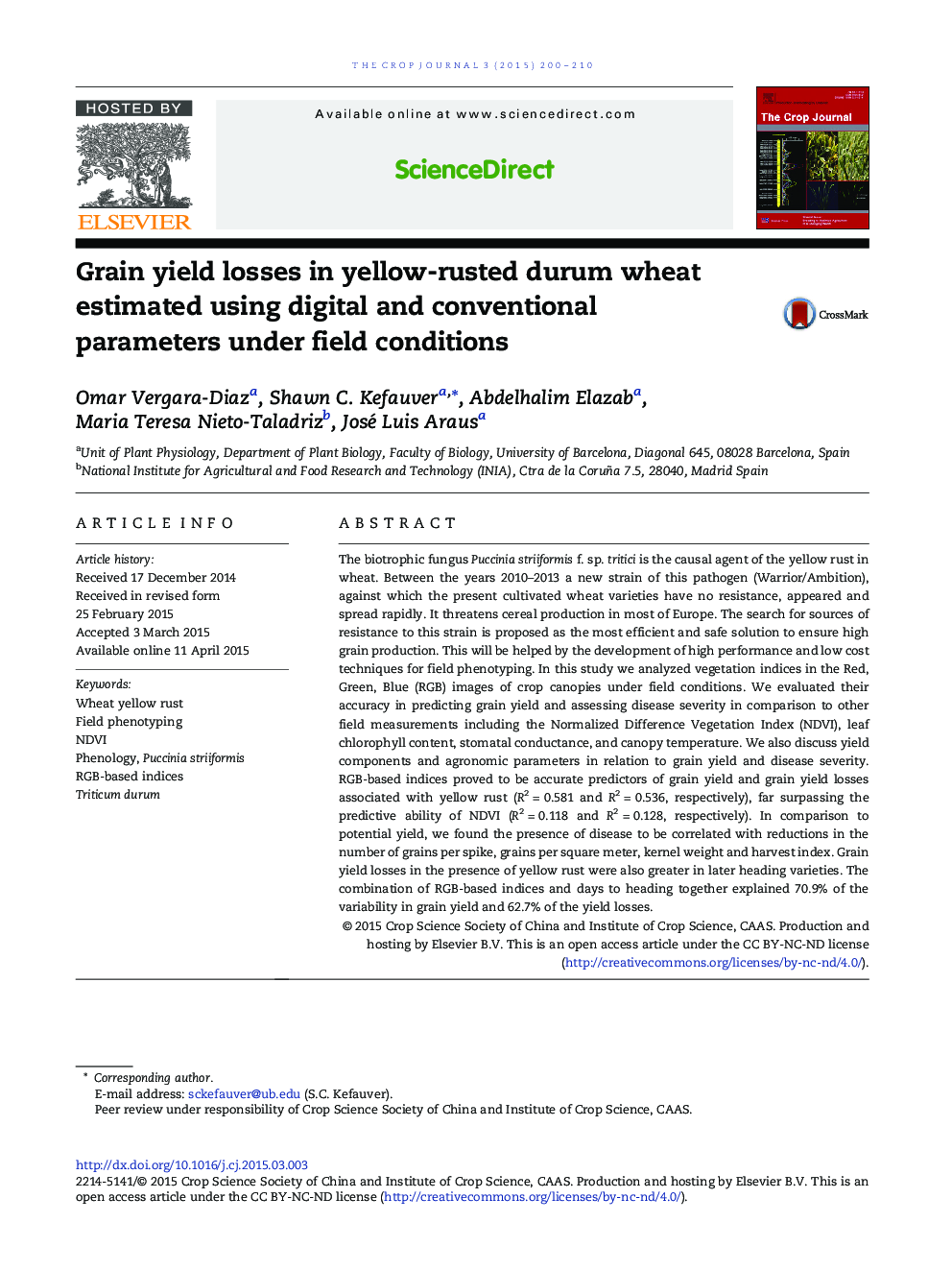| Article ID | Journal | Published Year | Pages | File Type |
|---|---|---|---|---|
| 2079583 | The Crop Journal | 2015 | 11 Pages |
The biotrophic fungus Puccinia striiformis f. sp. tritici is the causal agent of the yellow rust in wheat. Between the years 2010–2013 a new strain of this pathogen (Warrior/Ambition), against which the present cultivated wheat varieties have no resistance, appeared and spread rapidly. It threatens cereal production in most of Europe. The search for sources of resistance to this strain is proposed as the most efficient and safe solution to ensure high grain production. This will be helped by the development of high performance and low cost techniques for field phenotyping. In this study we analyzed vegetation indices in the Red, Green, Blue (RGB) images of crop canopies under field conditions. We evaluated their accuracy in predicting grain yield and assessing disease severity in comparison to other field measurements including the Normalized Difference Vegetation Index (NDVI), leaf chlorophyll content, stomatal conductance, and canopy temperature. We also discuss yield components and agronomic parameters in relation to grain yield and disease severity. RGB-based indices proved to be accurate predictors of grain yield and grain yield losses associated with yellow rust (R2 = 0.581 and R2 = 0.536, respectively), far surpassing the predictive ability of NDVI (R2 = 0.118 and R2 = 0.128, respectively). In comparison to potential yield, we found the presence of disease to be correlated with reductions in the number of grains per spike, grains per square meter, kernel weight and harvest index. Grain yield losses in the presence of yellow rust were also greater in later heading varieties. The combination of RGB-based indices and days to heading together explained 70.9% of the variability in grain yield and 62.7% of the yield losses.
